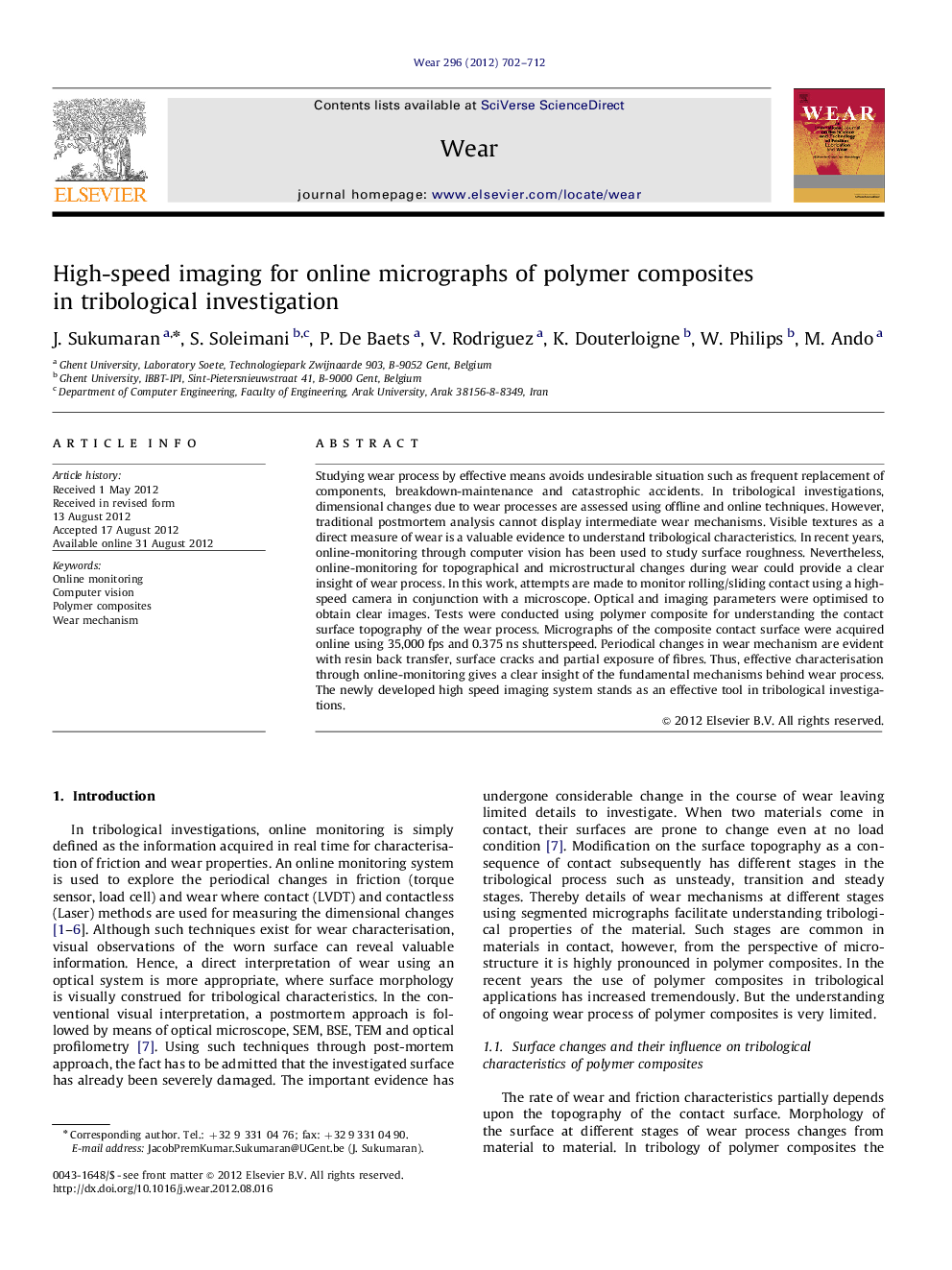| کد مقاله | کد نشریه | سال انتشار | مقاله انگلیسی | نسخه تمام متن |
|---|---|---|---|---|
| 617844 | 1455005 | 2012 | 11 صفحه PDF | دانلود رایگان |

Studying wear process by effective means avoids undesirable situation such as frequent replacement of components, breakdown-maintenance and catastrophic accidents. In tribological investigations, dimensional changes due to wear processes are assessed using offline and online techniques. However, traditional postmortem analysis cannot display intermediate wear mechanisms. Visible textures as a direct measure of wear is a valuable evidence to understand tribological characteristics. In recent years, online-monitoring through computer vision has been used to study surface roughness. Nevertheless, online-monitoring for topographical and microstructural changes during wear could provide a clear insight of wear process. In this work, attempts are made to monitor rolling/sliding contact using a high-speed camera in conjunction with a microscope. Optical and imaging parameters were optimised to obtain clear images. Tests were conducted using polymer composite for understanding the contact surface topography of the wear process. Micrographs of the composite contact surface were acquired online using 35,000 fps and 0.375 ns shutterspeed. Periodical changes in wear mechanism are evident with resin back transfer, surface cracks and partial exposure of fibres. Thus, effective characterisation through online-monitoring gives a clear insight of the fundamental mechanisms behind wear process. The newly developed high speed imaging system stands as an effective tool in tribological investigations.
► This paper focuses on developing a high speed imaging system for tribological investigation.
► Online monitoring of moving surfaces is done using a combination of microscope and a high speed camera.
► Stages of wear process involving different wear mechanisms were identified.
► Back transfer of resin, partial exposure of fibres and pulverisation of fibres is evident.
Journal: Wear - Volume 296, Issues 1–2, 30 August 2012, Pages 702–712